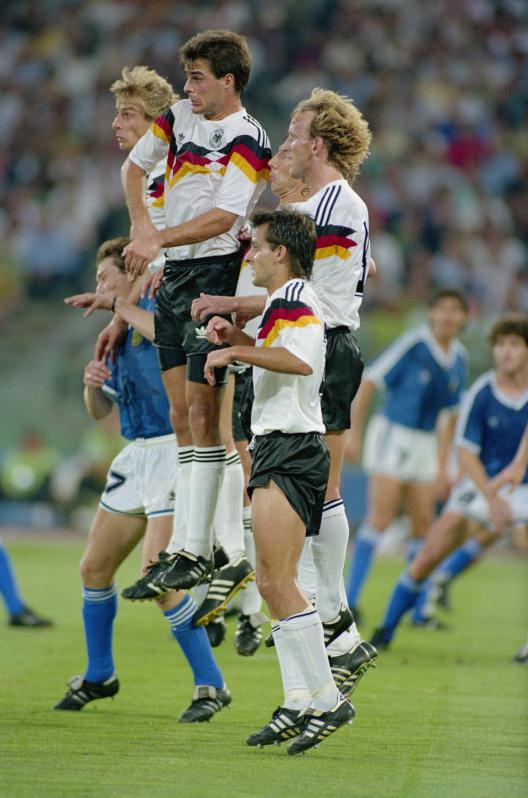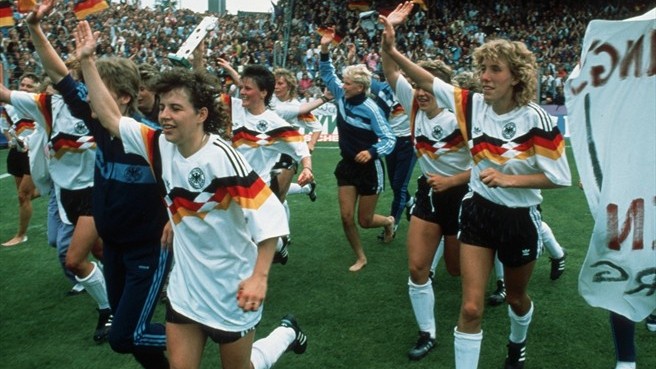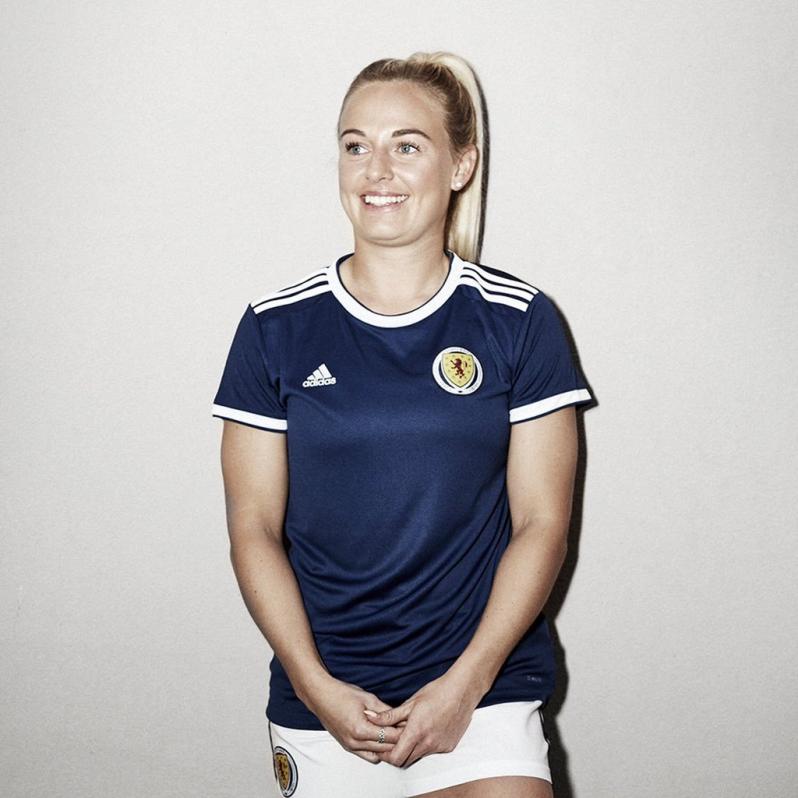When Germany takes to the pitch in Rennes, France, on June 8 to open its Women’s World Cup campaign against China, it’ll do so wearing a jersey that’s synonymous with triumph in German footballing lore. For most, the style evokes memories of Italia ’90, the men’s World Cup where Germany went on to capture its third title in that competition.

West Germany at the 1990 World Cup. Photo: Simon Bruty | Getty Images
What’s less recognized — at least outside of Germany — is that the women’s side also sported that look at Euro 1989, then referred to as the 1989 European Competition for Women’s Football.

West Germany celebrates its title at Euro 1989. Photo: UEFA.com
Women’s football in West Germany was banned as late as 1970, and the 1989 tournament represented the country’s first successful qualification for the European championship. The tournament was hosted in three cities in West Germany, and it was a phenomenal triumph with 22,000 attending the final in Osnabrück where West Germany dispatched Norway 4-1 to lift the trophy.
“That was their first big success, so it’s actually not a story that’s linked to the men’s jersey but to the big success of the German team in ’89,” says designer Linn Sickert. “It was the first time the game was recorded on TV and shown on TV. They won and it was a huge victory for German women’s football. After that they got a lot of attention, and it was historic for women’s football. So I wanted the design to reference this story.”
But with regards to tailoring and fitting, take one look at the jersey the women wore in 1989 to see how much further adidas has come today. All of the nations outfitted by the company in France (including Spain, Scotland and Sweden) will be wearing products that are the result of years of development and listening to feedback from female players, including members of the U.S. women’s national team.
The result is that it’s a slightly tailored fit with shorter sleeves and a focus on movement and freedom.
“In the past, we sometimes had this very deep V and this very, very tailored fit, especially for our fan jerseys,” says adidas Global Product Marketer Marissa Schultz. “What we’re seeing in the trends and the feedback from female athletes, and also fans, is that yes, they want a female fit but not necessarily this very stereotypical female fit. It’s still tailored to a women’s body, but not as much as it’s been in the past.”
adidas 2019 Women's World Cup Jerseys
Germany

Sweden

Spain

Scotland






